Are you running paid ad campaigns for your business? Do you want to create a perfect landing page that compels visitors to click on the ‘Buy’ or ‘Apply Now’ button? However, it’s not that easy to create a top-notch landing page that readily converts users. According to a study, landing page conversion rates vary from 2.6% to 6.1%, with an average rate of 4.02%. How does your site compare?
If your landing pages are struggling to drive conversions, you need to learn about the best practices for landing page optimization. Go through the following sections to know how to drive more conversions on your landing page.
Understanding Landing Page Optimization
First, let’s understand what a landing page is. A landing page is a webpage built to convince readers to take a certain action- whether it’s signing up for a free trial, providing contact information, or buying a product or service.
Landing page optimization (LPO) is the process by which you make your webpage more efficient in generating leads. It involves improving the page layout, providing relevant information, and taking other measures required to rank the page higher on search engine result pages (SERP). Well-optimized landing pages convince readers to convert, i.e., sign up or make a purchase.
LPO is a subset of Conversion Rate Optimization (CRO), which is the process of increasing the number of conversions. Businesses identify which landing pages they can create and optimize as a part of a larger inbound marketing strategy to attract more customers.
Why Is Landing Page Optimization Important?
If we consider the marketing funnel, a landing page is something that appears at the very bottom of the funnel. So naturally, it has the highest conversion potential if optimized correctly. Taking measures to address buyers’ concerns on the landing page can increase conversion rates by 80%.
To be honest, even minor tweaks to the landing pages can massively improve their efficiency and rankings. But it has to align to the audience’s expectations. Remember, a good landing page is like the ultimate seal in a contract that completes the buyer’s journey – turning them into a client.
So, a well optimized one will be helpful for both organic and paid traffic – navigating them towards a successful conversion.
Struggling to get conversions? Boost your lead generation with the content factor
Benefits of Optimizing Your Landing Pages
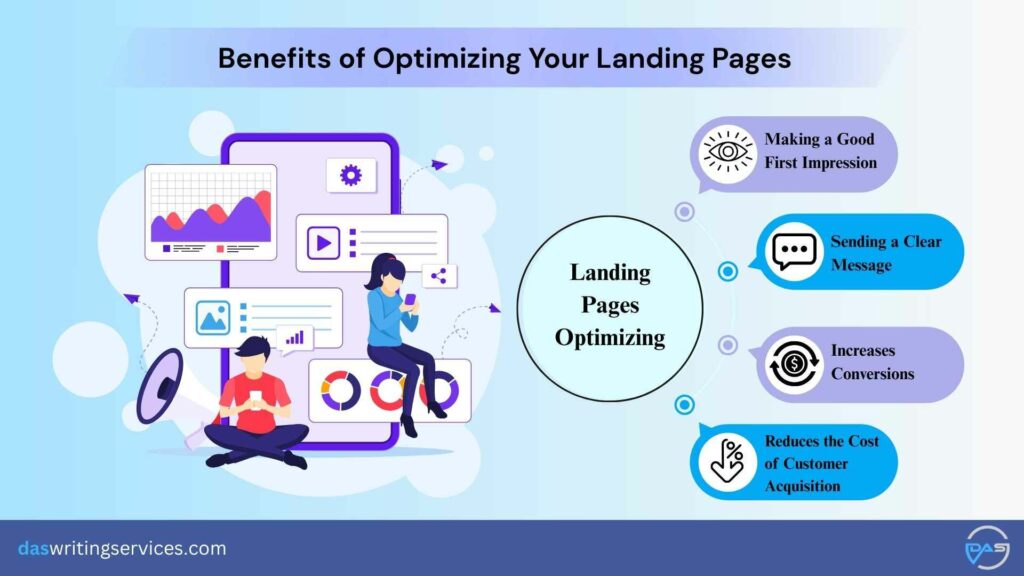
When you create an effective landing page that serves the interest of your audience, it not only help in conversion but also produces an overall positive impact for the brand.
1. Making a Good First Impression
A landing page is the first thing your customers will see when they visit your website. An UX optimized landing page can capture the reader’s undivided attention by limiting on page navigation. With fewer opportunities to navigate within the website, it encourages the user to convert.
2. Sending a Clear Message
Landing pages are meant to direct readers to take action, such as clicking on a button or filling out a form. Proper landing page optimization helps to clearly communicate the features and benefits of your product/service to customers and shows how it solves their pain points.
3. Increases Conversions
As mentioned before, landing pages drive the conversion rate. By optimizing SEO for landing pages, you can capture the reader’s attention and show them a compelling reason to take action- purchasing a product, subscribing to a service, or getting a free download. Without a good landing page, your advertisements could be in vain, as many users may click out without proper direction.
4. Reduces the Cost of Customer Acquisition
SEO-optimized landing pages attract audiences and drive conversions organically. They support your digital marketing campaign by compelling users to complete their conversion journey. A well-optimized page also increases your ad quality score and reduces your cost per click (CPC).
8 Steps to Optimize Landing Pages for Your Audience?
Follow the below best practices to create an engaging landing page that draws in customers:
Step 1: Know Your Goals and Audience
To create a well-optimized landing page, start by knowing the requirements it must meet. Ask yourself –
- Why you are creating the page?
- Who is the idea viewer of your landing page?
- What you want your visitors to do on the page?
The more insights you have of your target audience, the more effectively you will be able to convert your visitors.
Example:
Let’s say you want to create a landing page for a book launch event. Here, the answer to ‘why’ is that you want to have a list of attendees for the upcoming event. The ‘for whom’ could be book lovers in the genre of Indian fiction. Similarly, ‘what do you want’ could mean that you want viewers to read an excerpt of your upcoming book. Having a thorough plan for landing page optimization allows you to personalize as per user preference to derive maximum value.
Step 2: Research the Relevant Keywords
Keyword research is essential to create an effective landing page for ads. For good landing page copywriting, you need to research relevant secondary keywords, including high-potential long-tail keywords and semantic keywords. Try to also rank for industry-related keywords and bottom-of-the-funnel keywords used by customers. This should also enhance your overall ad quality score besides reducing ad costs.
You can use tools like Semrush’s Keyword Magic Tool or Ubersuggest to find relevant keywords for your landing page. The tools allow you to apply various filters to sort keywords based on their intent, cost-per-click, keyword volume, etc.
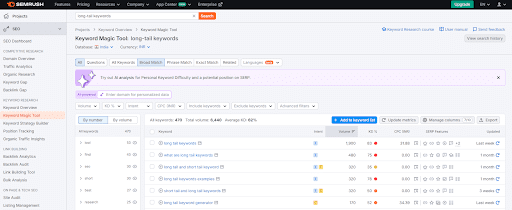
Step 3: Design the Page Based on Buyer Persona
Buyer persona is the ideal consumer of your product or service. To retain viewers, your landing page needs to cater to your consumer’s preferences i.e. the preferences of your ideal buyer. For instance, your page’s UI/UX should be intuitive and easy to understand. While the content can highlight the value propositions.
For landing page optimization, you also need to recognize the existing knowledge of the audience. Basically, anybody arriving on the landing page must be familiar with your offerings. So, a list of your product and service on the landing page would be both repetitive and redundant.
Instead try and reiterate potential use cases, the value it would create, discounts and offers to prompt an immediate action.

Step 4: Customize the Design to Match Your Brand
Your landing page design should reflect your brand value and tone, fulfil searchers’ intent, and convince the reader to take action. Ensure that the various design elements are consistent with your brand image. A design match should be present across your social media and marketing channels with the same color scheme, layout, and branding.
Here are some additional landing page design tips you should keep in mind:
- Include plenty of whitespace in your page layout. This makes your page look clean and focuses the viewer’s attention on buttons, taglines, and forms.
- Make sure to include your primary message and CTA prompt in the “above fold” content. Viewers need a compelling reason to scroll down.
- Use an attention-grabbing button for call-to-action (CTA) optimization. Don’t be afraid to create a button that stands out due to its size or color.
- Incorporate images, infographics, and icons throughout your page. Pictures can tell a story and highlight the features and benefits of your product or service.
- Choose a color palette with both bright and muted colors to create a good-looking page.
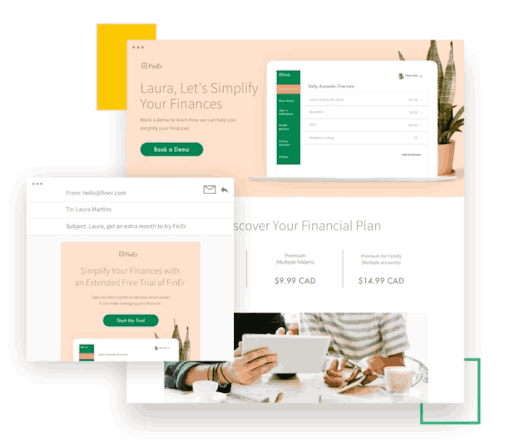
Step 5: Create High-Quality and Compelling Content
After deciding on your landing page design, you need to determine the structure of its content. Use attention-grabbing headlines and taglines to grab the readers’ attention. You should also use visuals to enhance your content. Next, go through the content to ensure that it’s clear and concise and guides visitors to take a certain action. Some essential landing page optimization tips for creating compelling content are to use a second-person tone, directly address the reader’s pain points, and answer how your product or service can help them meet their aspirations.
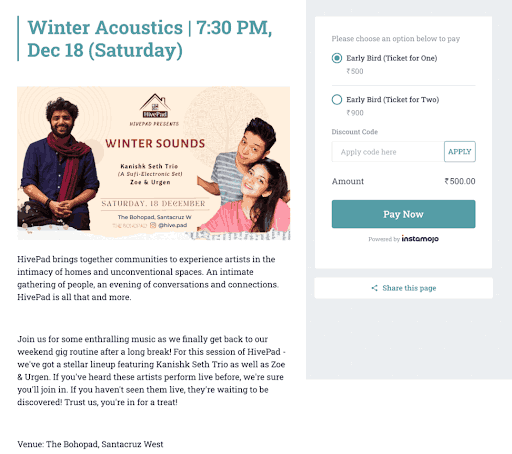
Did you know, having persuasive content can increase your conversion potential by upto 47%? Let high-quality content do your sales. Hire the content experts today!
Step 6: Leverage On-Page SEO Techniques
Structure your landing page not only for effective conversions but also for ranking high on search result pages. As people find pages via search engines all the time, your landing page needs to be visible on SERPs to draw in viewers. Here are some of the best practices for on-page SEO for landing pages:
- Don’t write your content for search engines; instead, write for your audience, answering their queries.
- Find the best keywords for your landing page, including long-tail keywords and industry keywords. Incorporate these keywords organically in your content.
- Include a short and compelling meta title with the primary keyword. Write a to-the-point meta description that convinces the user to click.
- Distribute internal links on your page to retain viewers, but don’t overdo it. You can also include some high-authority external links.
- Your long-term pages should have enough content to get a high spot in the SERPs. You can present well-written information on these pages.
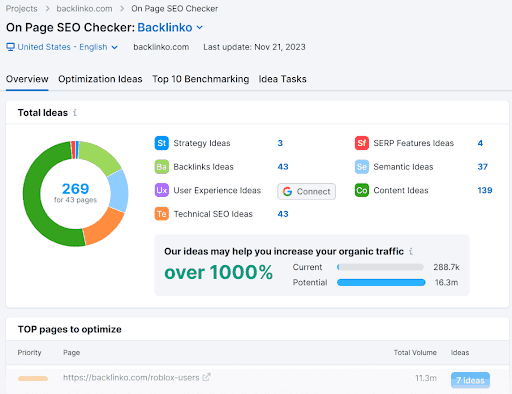
Step 7: Test Your Page and Identify Problems
Before you publish your landing page, check if there is any problem that stops it from fulfilling its role. Single out what problems are preventing more conversions on your landing page with surveys, pop-ups, and active tracking. Take the following landing page optimization actions to identify problems you can fix: Getting Viewer Feedback: An easy way to identify the problems faced by visitors is to simply ask them. You can ask for feedback using on-site surveys and exit pop-ups and understand why they are selecting other sites. Use the information to make edits and test the new versions of pages.
1. Getting Viewer Feedback: An easy way to identify the problems faced by visitors is to simply ask them. You can ask for feedback using on-site surveys and exit pop-ups and understand why they are selecting other sites. Use the information to make edits and test the new versions of pages.
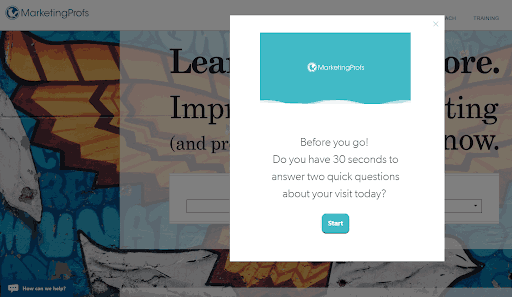
2. Tracking Visitor’s Behavior: Heatmaps refer to visual reports that provide information about the places on your website where visitors interact. You can check click maps to know where most users clicked, move maps to know where users paused, and scroll maps to show scroll depth. This provides great insights you can use to optimize your page design.
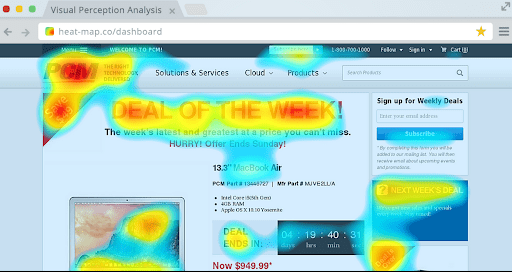
3. A/B Testing Landing Page: A/B testing or split testing is when you build two or more page variations to compare their performance. In it, you have one original page and one or more variants where you run experiments. Using a landing page testing tool like Google Optimize, you can test various elements, including headings, page length, layout, menus, and buttons on the page, and find out which works the best.
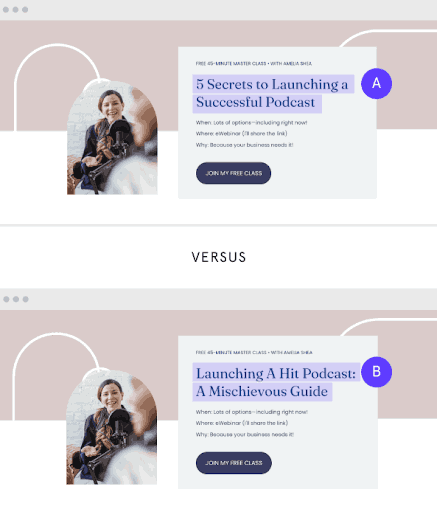
Additional Tips for Landing Page Optimization
Follow the given tips to further optimize your landing page for more leads and sales:
1. Quickly State Your Value Proposition
Articulate your brand’s value proposition quickly and clearly on your landing page. Test different variations of headings and call-to-action prompts to ensure that they match the viewer’s search intent. Furthermore, ensure that every element of your landing page supports your goals.
2. Minimize Page Load Speed
The landing page loading speed is of significant importance. Pages that load within 2.4 seconds have a 1.9% conversion rate, which drops to less than 1% for loading time above 4.2 seconds. You should optimize images, incorporate caching, lower the number of redirects, and publish content via a content distribution network (CDN) to reduce the loading speed.
3. Reduce Clutter or Distractions
A landing page has a simple purpose- to convert visitors into leads. For landing page optimization, you must remove all clutters and distractions that hinder visitors from taking action. This includes on-site navigation, internal links, and other distractions. Remember that a landing page has a specific purpose and does not require every detail of your site.
4. Provide Something of Value
Visitors to a landing page expect something of value by clicking on your landing page, whether it’s better deals, discounts, or information. If your landing page collects personal information like phone numbers or email, your visitors will want something in exchange. Giving visitors a small reward for their loyalty is always good marketing.
5. Use Dedicated Pages for Different Campaigns
Because people come to your landing page with a specific purpose, you should keep their attention focused by creating a dedicated page for each campaign. This is even more important for paid advertising; otherwise, you could easily overspend your budget. It also directs organic traffic searching for a particular product, service, or offer on your site.
6. Optimize for Mobile Devices
Since more than half of global website traffic comes from mobile devices, mobile landing page optimization is a must. The user experience must be optimal, whether visitors are using mobile phones or tablets. Create mobile-friendly pages by using lower-resolution images, reducing page load speed, and creating responsive pages.
Takeaway
Landing pages are the first thing that visitors will see on your website. Therefore, building a well-optimized landing page is key to increasing traffic and increasing conversions organically. To design a landing page that compels users to take action, you need to follow the above best practices and tips for landing page optimization.
If your writers are struggling to create a high-conversion landing page, why not take the help of a reputable content agency? Skilled content writers can easily identify the problems on your pages and create pages designed for the search engine.
Subhodip Das is the founder and CEO of Das Writing Services Pvt. Ltd. He has an experience of 12 years in the field of Digital Marketing and specialises in Content Writing and Marketing Strategies. He has worked with well-established organisations and startups helping them achieve increased Search Engine Rank visibility. If you want to grow your business online, you can reach out to him here.
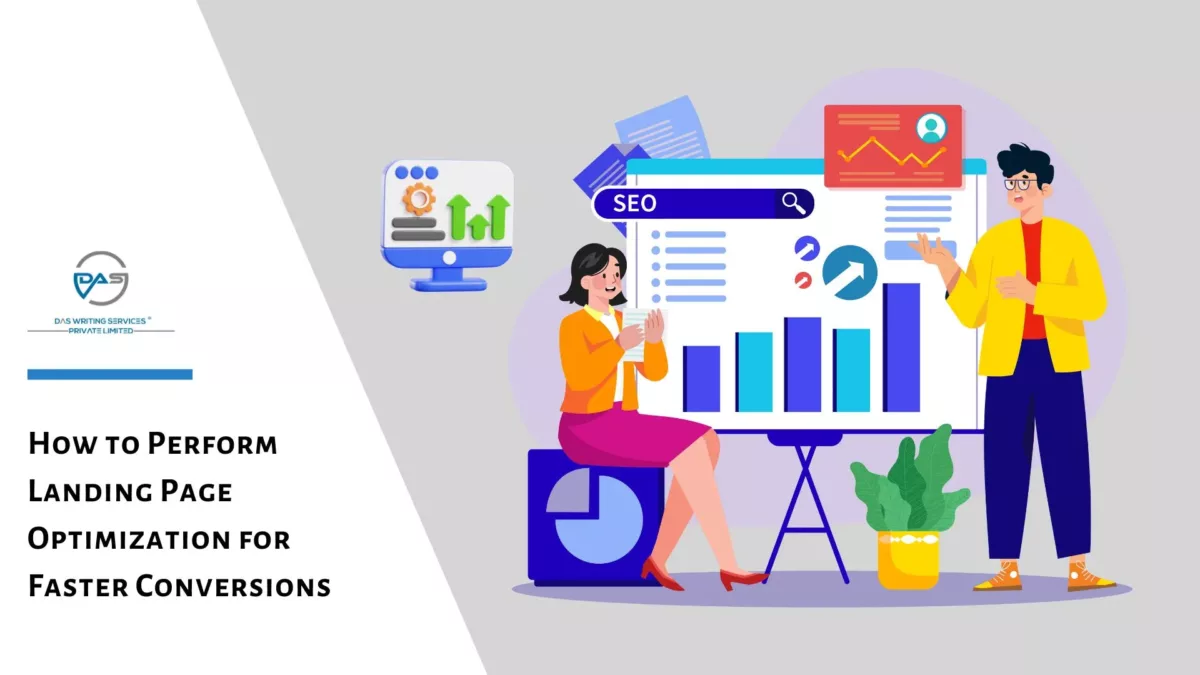

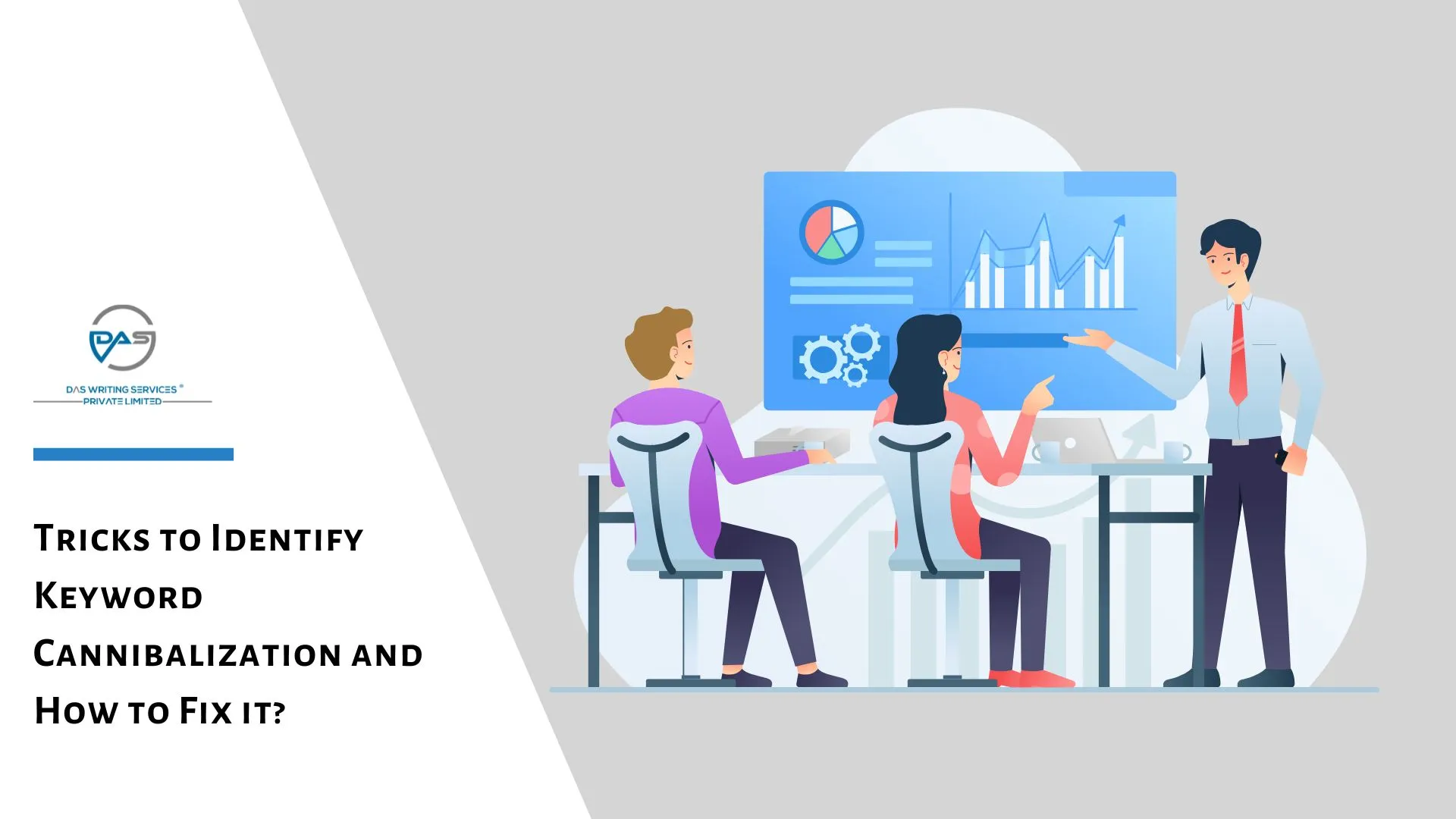

Leave a comment